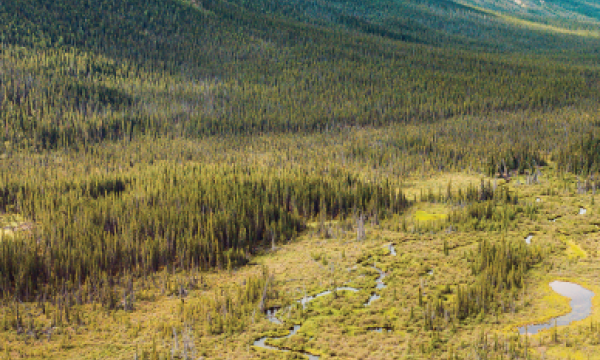Wetland Knowledge Resources
Resource
Peatlands represent vital carbon reserves; however, once ignited, they release stored carbon, inflicting lasting environmental harm and necessitating prolonged recovery periods. An innovative method...
Resource
Auteurs
Marjo Palviainen
Jukka Pumpanen
Virginia Mosquera
Eliza Maher Hasselquist
Hjalmar Laudon
Ivika Ostonen
Ain Kull
Florence Renou Wilson
Elina Peltomaa
Mari Könönen
Samuli Launiainen
Heli Peltola
Anne Ojala
Annamari Laurén
Drainage intensity and forest management in peatlands affect carbon dioxide (CO2) emissions to the atmosphere and export of dissolved organic carbon (DOC) to water courses. The peatland carbon (C)...
Resource
Auteurs
Hanxiang Liu
Dongxue Han
Guoping Wang
Peatland carbon accumulation plays a vital role in the global carbon pool and climate change dynamics. However, understanding how peatland carbon accumulation responds to climate change is challenging...
Resource
In this edition you will learn about: Changing water levels in restored peatlands Assessing ecosystem services of prairie pothole wetlands Empowering indigenous resilience with treatment wetlands...
Resource
The Wetland Knowledge Exchange releases monthly newsletters that highlight new research, publications, news, interesting facts, events and more. In this edition you will learn about: Predicting...
Resource
The Wetland Knowledge Exchange releases monthly newsletters that highlight new research, publications, news, interesting facts, events and more. In this edition you will learn about: The Can-Peat...
Resource
Auteurs
James Kenyon
Jessie Lavallee-Whiffen
Yukon Wetland Field Guide co-authors and DUC Boreal Program team members James Kenyon and Jessie Lavallee-Whiffen walk attendees through the field guide, including wetland classification decision keys...
Resource
Auteurs
Ethan Dittmer
Ryan Askren
Heath Hagy
Jay Hitchcock
Douglas Osborne
Public lands managed for wildlife frequently provide various forms of sanctuary to increase residency times and allow access to energetic and other habitat resources for waterfowl. The influence of...
Resource
Auteurs
Anne Yalien Yusuf
Ewen Silvester
Robert Brkljaca
Christina Birnbaum
James Chapman
Samantha Grover
Peatlands play a significant role in global carbon and nitrogen cycles due to their carbon storage capabilities. However, there are key knowledge gaps in our understanding of how peatland hydrology...
Resource
Auteurs
Ricky Kong
Chibuzo Ilogu
Jean-Marie Sobze
Chemical spills are common at oil and gas facilities and traditionally remediation occurs by excavating and removing the contaminated soil, which is environmentally destructive and financially...




